The little boat seems to be almost swallowed up by the waves which are rocking us so hard we have to hold on to our seats. Instead of looking out for whales on our whale watching tour, I am starting to feel nauseous. I couldn’t even lean over the reeling if I had to be sick because I’d probably fall out so I just hope the nausea won’t get worse. Lisa’s facial expression reflects my misery. Happiness looks different. We’re both wearing at least four layers of clothes and a poncho but we’re still freezing. Even if there was a whale somewhere, it would be impossible to spot it through the waves, wind and rain.
Needless to say, we don’t see a whale that day but we almost don’t care anymore, we’re that happy to get off the boat. Guaranteed Whales apologise and give us half the money back, plus we can come back tomorrow morning for another go, which we politely decline before we rush back to the hostel for a shower to warm up.
We only left a very cold and wet Aberdeen and the Bear-on-the-Lake hostel an hour or so ago, after saying goodbye to Matt who is staying. Our drive along the coast line is probably very scenic but all we can see is a thick white fog and, at our first stop in Green Cove, a little bit of the coast behind the hazy wall in front of us. At Neil’s Harbour and White Point, it literally is, well, just white, but suddenly, somewhere between South Harbour and Pleasant Bay, the fog starts to lift. By the time we get to Beulach Ben Falls, the sun is out and we have to take off two layers of clothes because we’re getting hot.
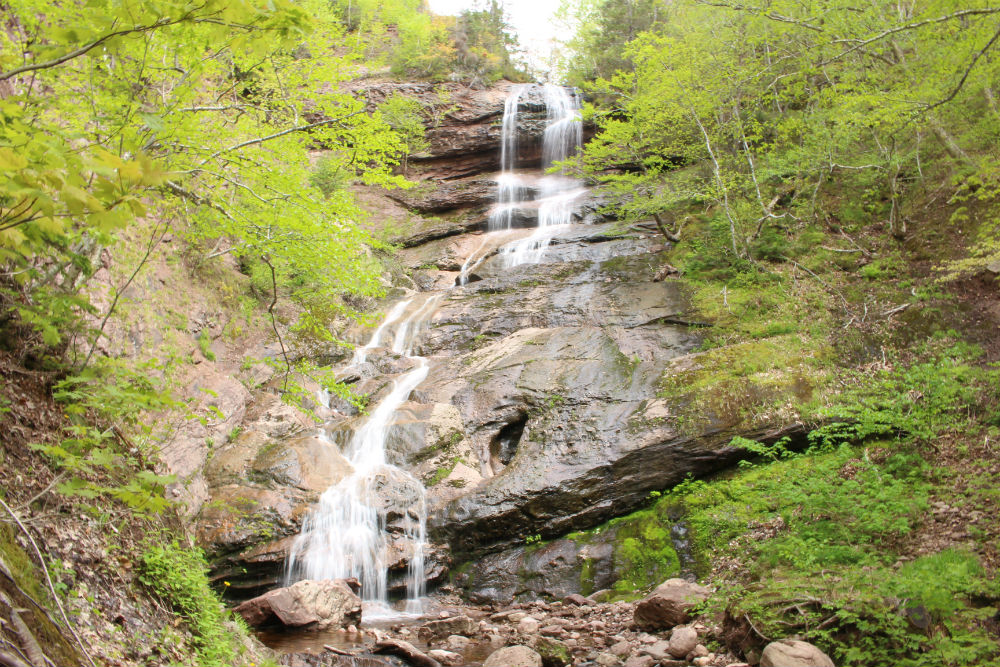
People say in Nova Scotia when the weather is bad, just give it a couple of hours and it’ll change. Now I know what they mean. Arriving in Pleasant Bay, we head to the beach and walk through the water with our bare feet, enjoying a perfectly sunny day. The HI Cabot Trail hostel’s reception isn’t open for check-in yet so we just proceed to our next hike. Lisa, Shula and I are on wildlife watch now.
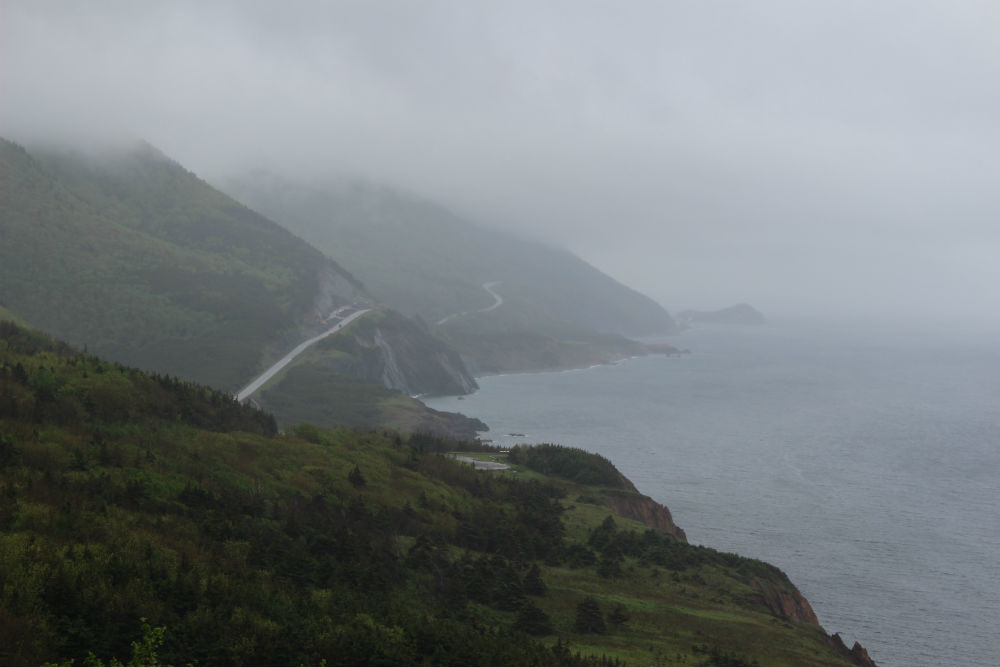
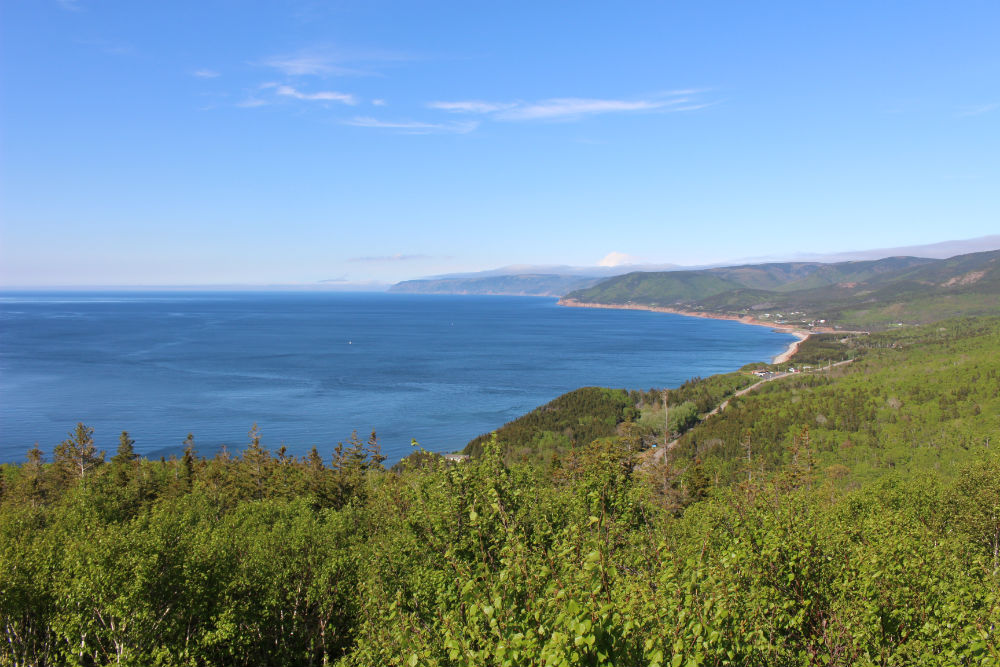
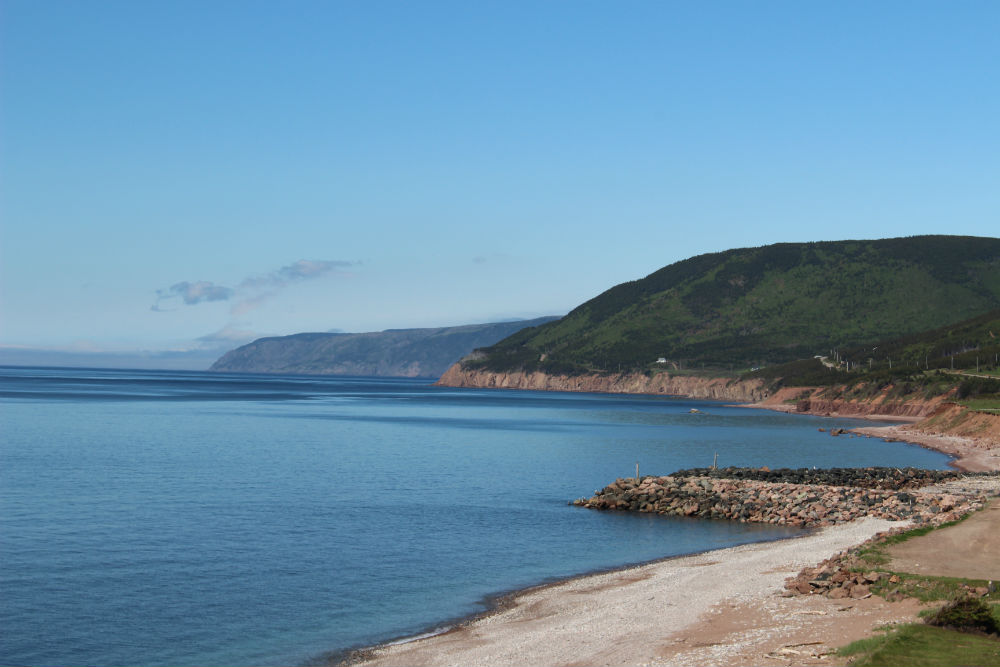
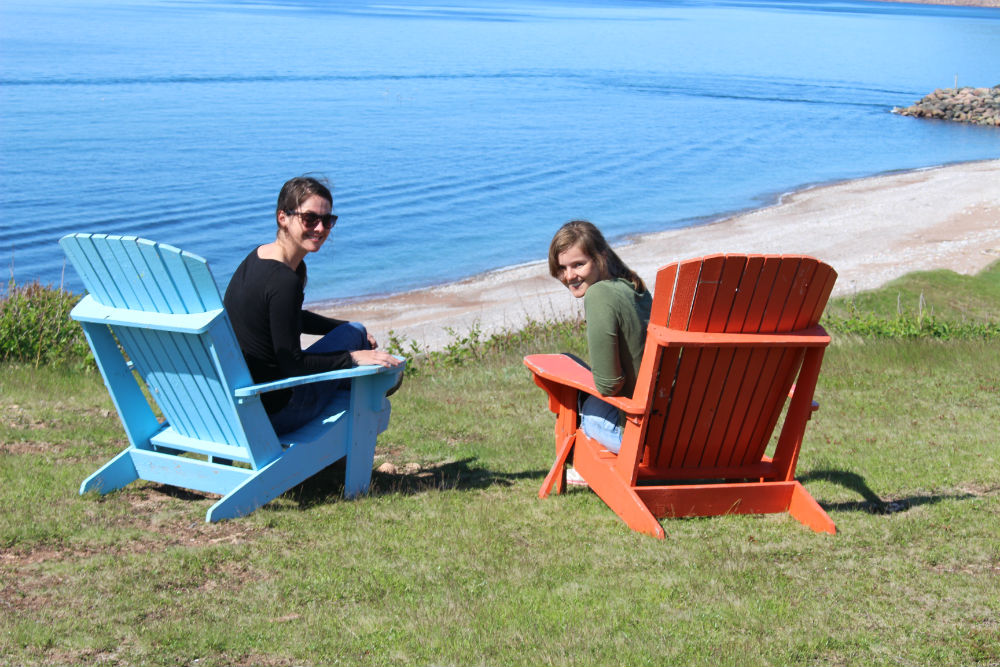
On the first hike, a signs warns us that moose, bears and coyotes are in this area. I knew there were bears in Canada but I didn’t expect them in Nova Scotia for some reason. The fact that we might face some coyotes is entirely new to me. I clearly didn’t think this through. At the park entrance, we’ve been given a brochure detailing what to do in case we’re attacked by any of these animals. This is what I am frantically trying to read and memorise now as we’re walking into the forest. With coyotes and bears, make yourself big. Do not run. Do not climb a tree. Never turn your back to them. Move away slowly. Fight back with all that you have in case of an attack. I’m feeling a little queasy now. Fighting a bear? How?
We see a lot of trees on our hike through the quiet forest until we get to Benjies Lake but no moose or any wildlife at all for that matter. But on the drive to our next hike, Lisa spots a moose in the forest near the road. After an excited U-turn, we stop at the side of the road and get out to have a closer look. Not long after, more cars, seeing us taking photos, come to a halt as well and soon enough, more than a handful of cars are parked on either side of the road, cameras out and big smiles all around. Henry the moose (as we named him spontaneously) is grazing, unimpressed about the spectators, at the edge of the forest.
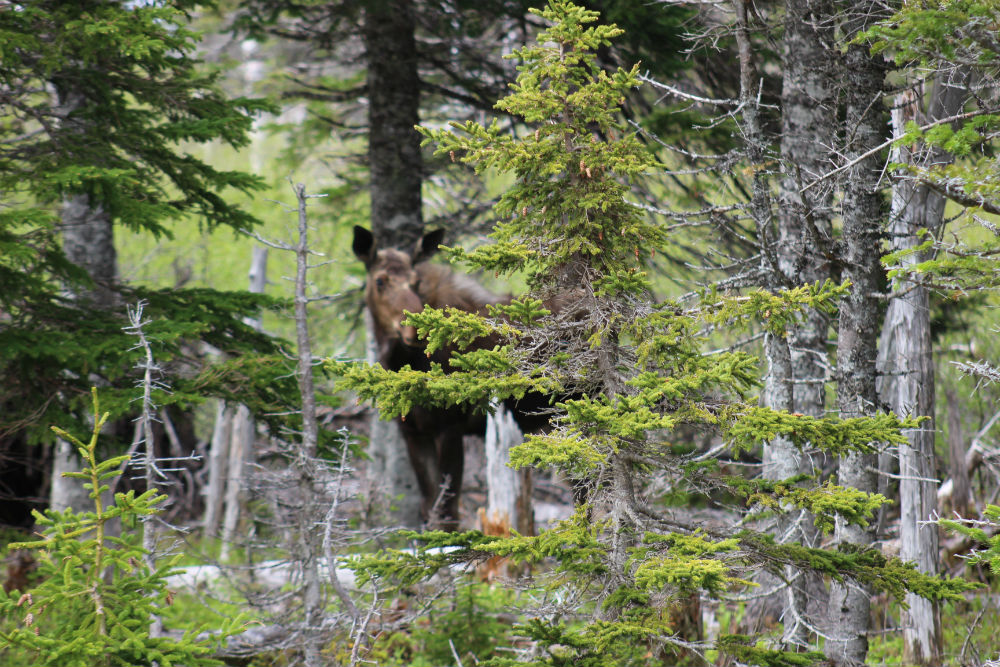
It’s now already late in the day but the sun is still out and knowing that the weather can be completely different tomorrow, we decide to also do at least a bit of the famous Skyline trail. This trek is a 1.5 – 2.5 hour return, depending if you do the entire loop or just go there and back. We only plan to do half an hour but when we meet other hikers that rave over the views, we decide to ignore our tired legs and push forward. And we don’t regret it. Despite almost being blown off the boardwalk at the edge of the hill, we cannot stop gazing at the stunning views across the ocean, densely wooded hills and windy roads of the Cabot Trail. The sun starts setting as we head back to the car.
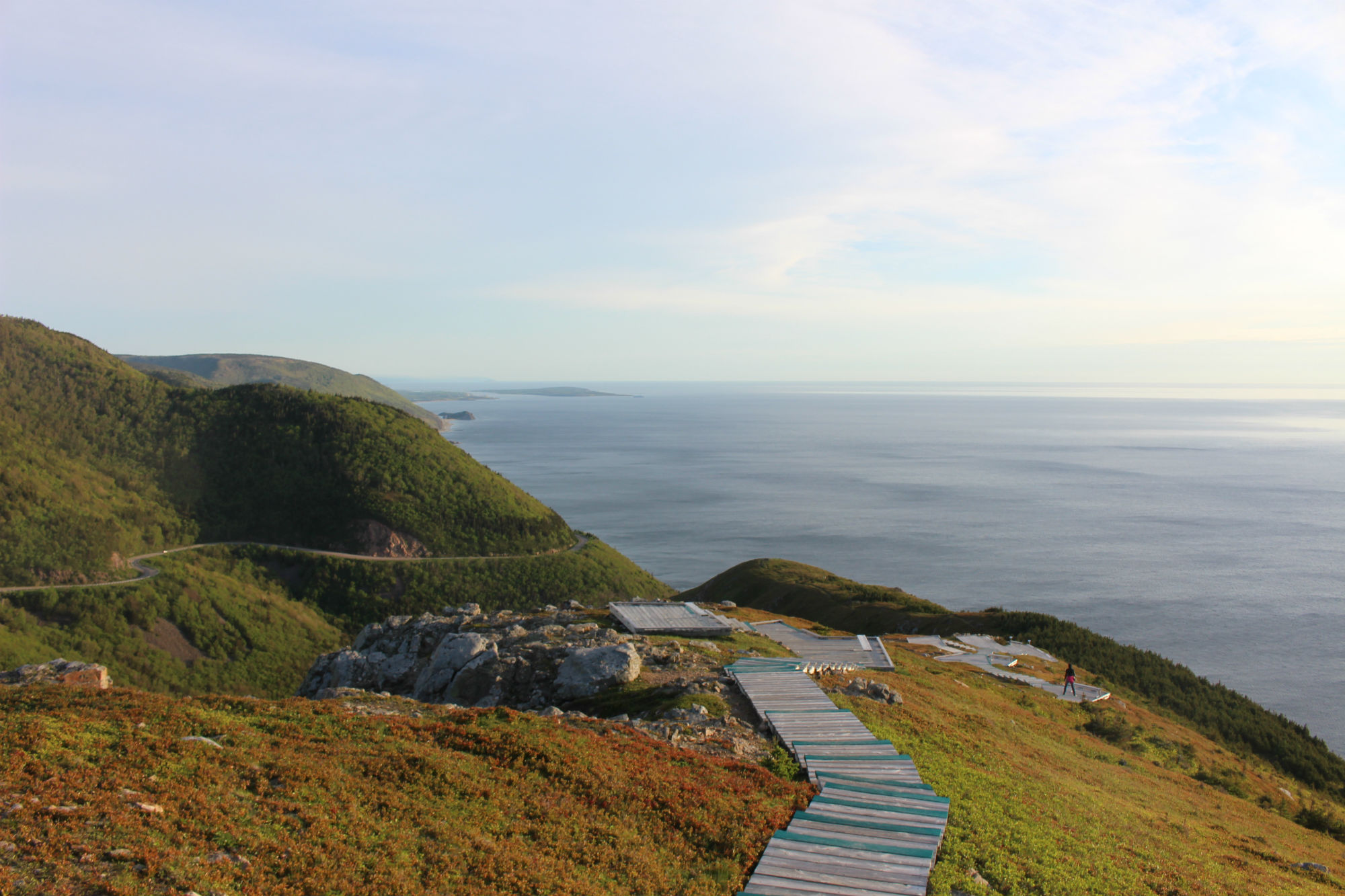
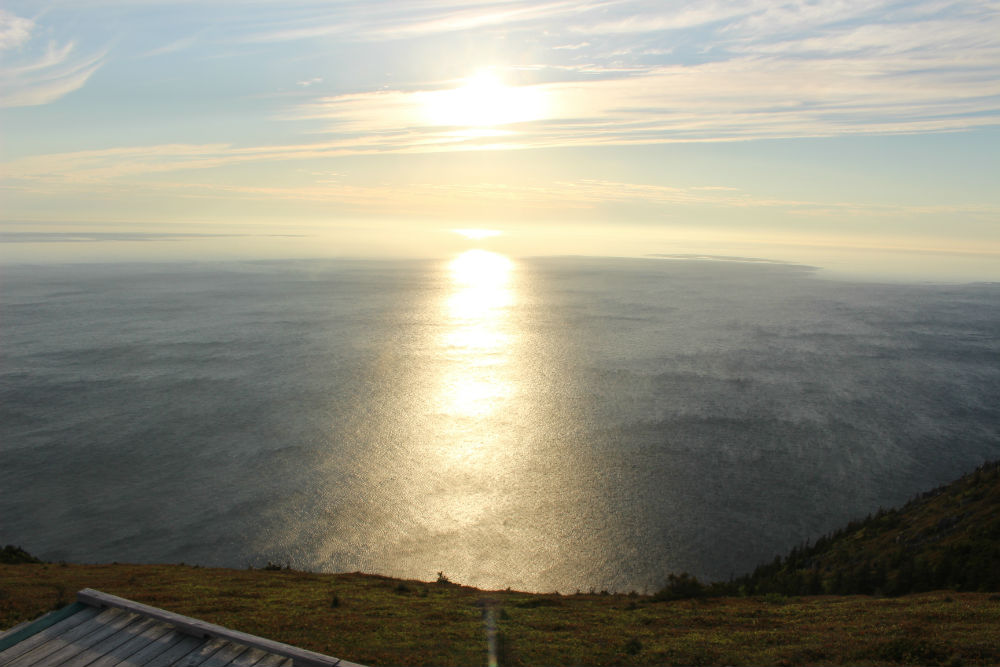
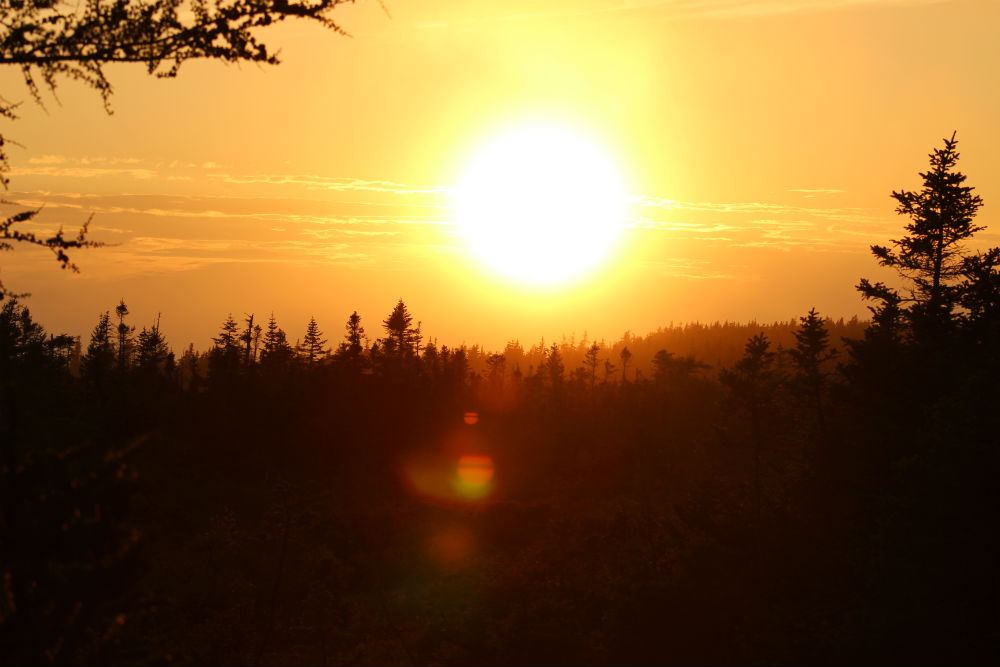
Suddenly, I see a movement in the woods. It’s a moose cow with their little one! We can only see it if we’re squatting down to look underneath the trees so Lisa, Shula and me almost lie on the floor while I’m trying to change the lens of my camera to the zoom lens. Moose cows are very protective of their young and this mother doesn’t hang around. By the time I have finished screwing around (literally), both mother and baby moose are gone. Still happy about the unexpected late sighting, we’re heading home at last and it’s only the next day, when we do another round of Benjie’s Lakes where lots of people see moose, that we finally get a got shot of a moose in the forest.
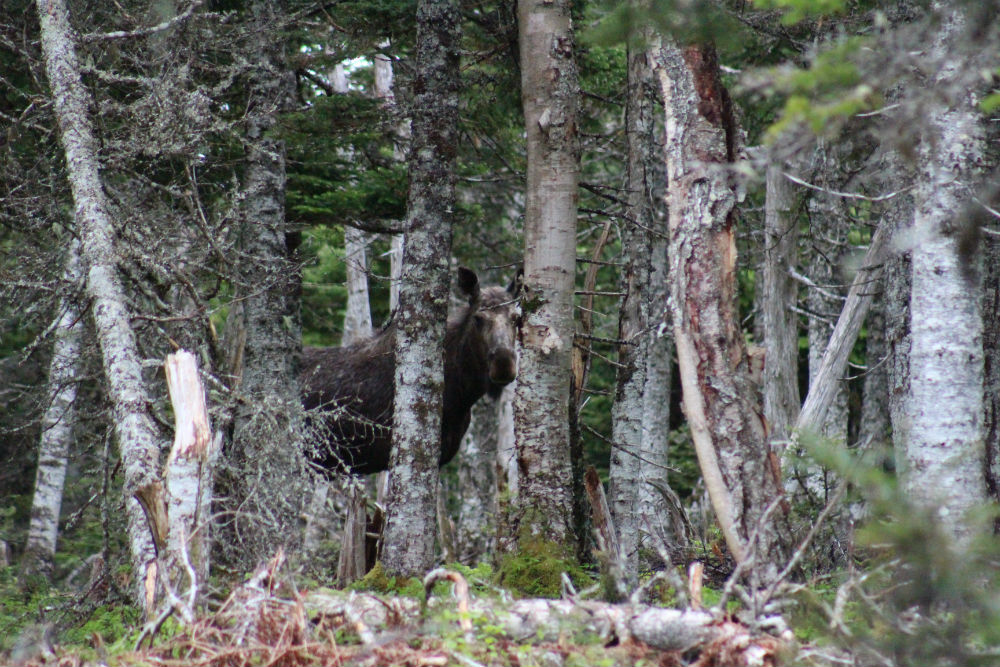
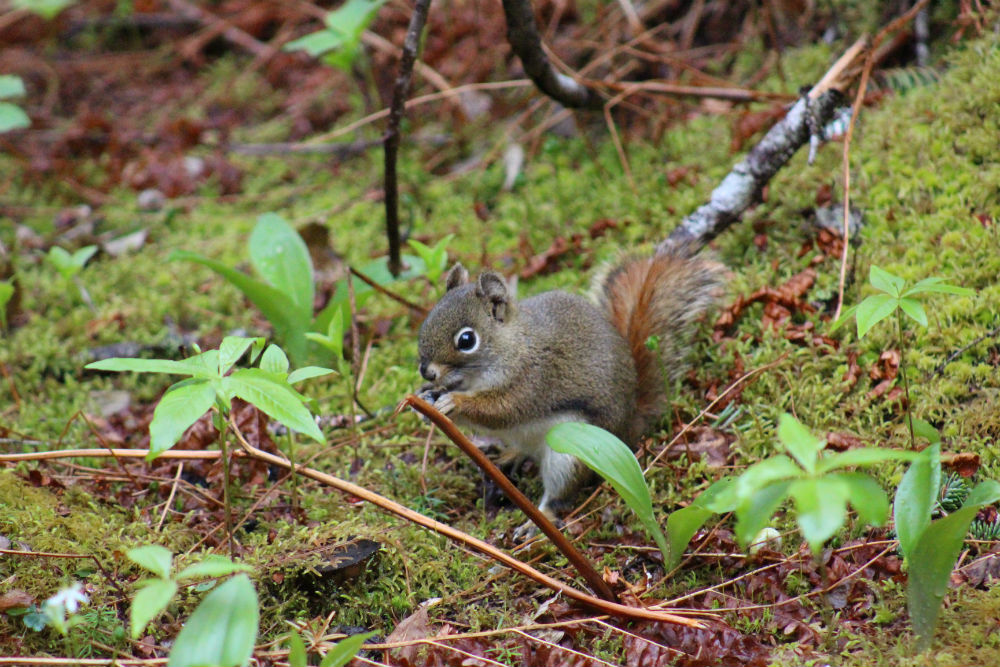
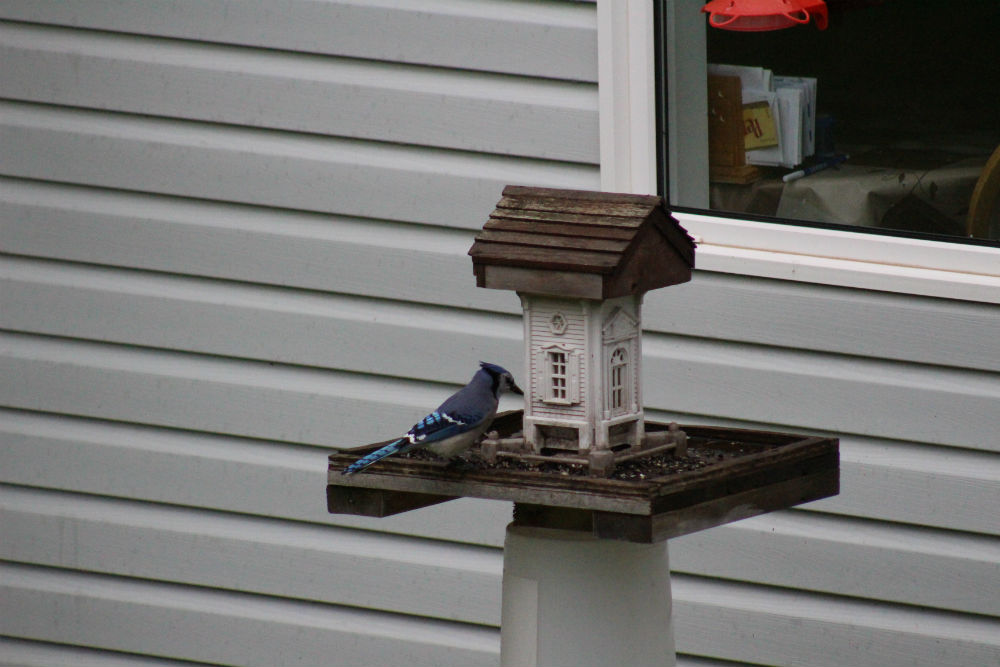
Although we weren’t crazy about giving the whale watching another go, Lisa and I change our minds when we wake up to an almost windless Pleasant Bay on the day we’re leaving Cape Breton. After the luck with the moose the day before and with the ocean looking nice and calm, we think it’s worth another try. Being on the boat this time is a much more pleasant experience, we can even go up on the deck. After almost an hour, we spot the first fin and soon we also hear a blow but we’re too late to see the actual animal. The excitement is big among our small group of four whale watchers this morning when we keep seeing smaller Minke Whale fins and backs popping out of the waters. And after a short visit of the Whale Interpretive Centre, it’s time for us to make our way to Wentworth were we’ll stay for the night before starting our journey back to Rivière-du-Loup and Montreal across New Brunswick.
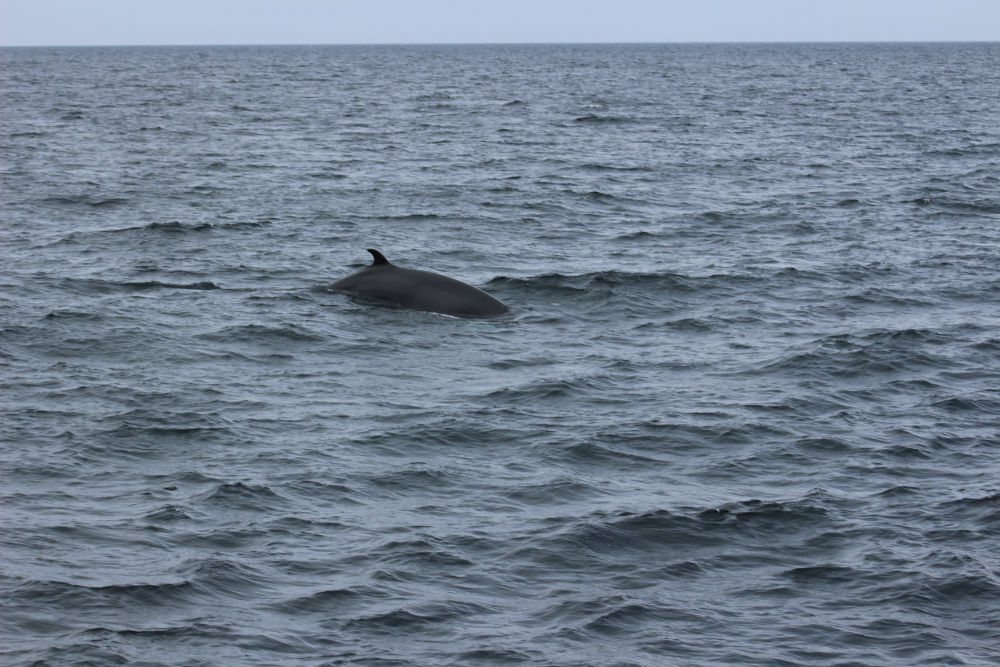
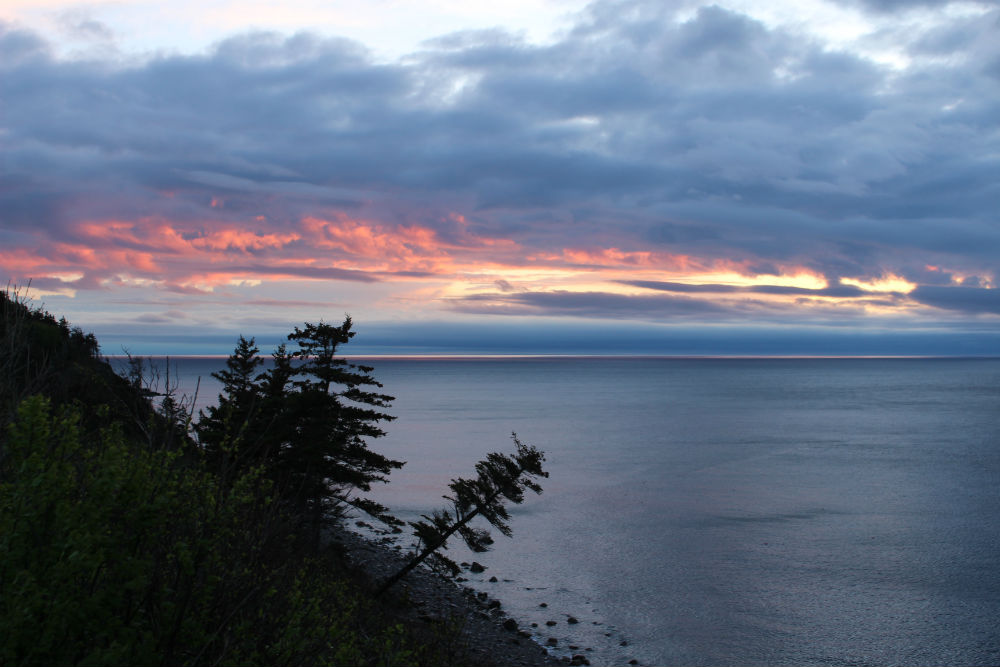
More about the Cabot Trail and our new favourite animal – the moose:
- The Cabot Trail is a scenic, 300 km drive along Cape Breton Island, Nova Scotia’s Northern tip. Numerous stopovers invite to see the spectacular coast line and there are plenty of hikes of all lengths and levels of difficulty. Upon entering Cape Breton Island National Park, visitors are handed a map of the area including all the hikes. This map can be found online here.
- The moose is the largest member of the deer family:
- Bulls can grow to 1.4 – 2.1 metres shoulder height.
- The antlers of a male moose can spread up to 1.8 metres wide.
- They can run at speeds of over 50 km/h

Great trip report!